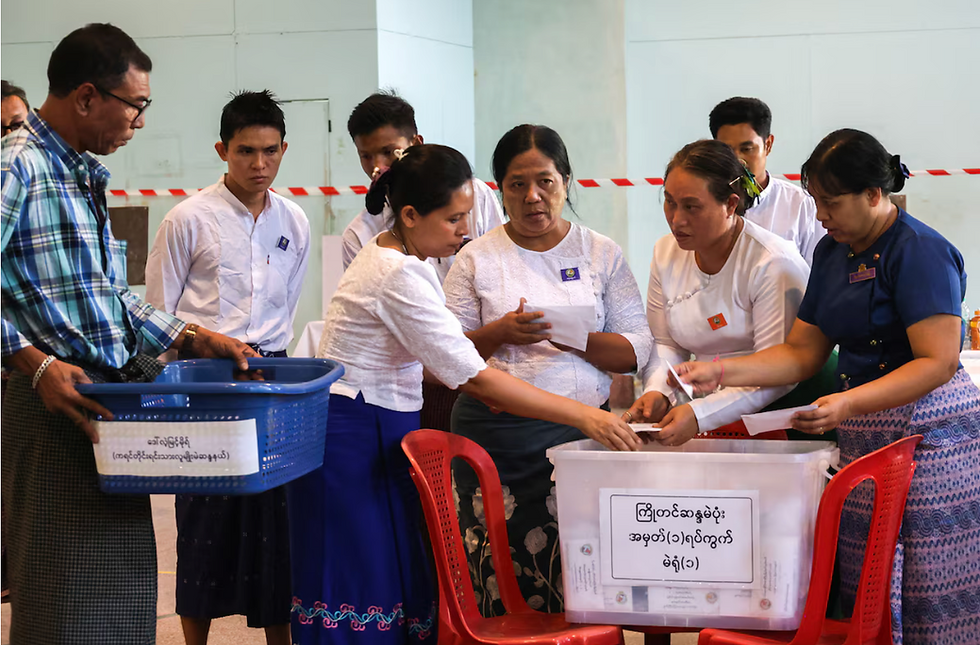Analysis: Israel’s killing of Palestinian civilians is no mistake, it’s a policy.
- Human Rights Research Center
- Oct 23, 2023
- 3 min read
For the safety of the author, this article is being published anonymously.
Submission Date: October 16, 2023
Publish Date: October 23, 2023
*Cover image: Gaza after bombing on 10/15/2023. Image source: CNN News

In the first six days of the current war in Gaza, the Israeli military dropped 6,000 bombs [2]. That is roughly the same amount that was used during the 50 days of war in 2014. In that summer 2,251 Palestinians were killed, 75% [3] of them civilians including more than 500 children. In 2014, over a quarter of the population, 450,000 Gazans, were displaced after 16,000 homes were destroyed [4]. This time around it seems the destruction will be even more extensive. Already, over 3,400 Palestinians have been killed in Gaza and one million have been displaced [5], accounting for nearly half of the besieged enclave’s population.
This war feels different, indeed; the extremely high Israeli death toll is unprecedented. Since 2008, and before the start of the current war, Palestinians constituted 95% [6] of the total fatalities in the conflict. The trauma inflicted on Israelis now has escalated the situation. The rhetoric in the streets and from Israeli leaders amounts to incitement to genocide, and the total siege imposed on the Gaza Strip is a war crime, as well as the forced displacement of hundreds of thousands of civilians.

But even though this particular war has been devastating, the tactics used by Israel are as old as the conflict itself. As Gadi Eizenkot, former chief of staff and current member of the war cabinet confessed to the press in 2008, the flattening of entire towns and neighborhoods through disproportionate and indiscriminate bombardment is a premeditated and approved Israeli army tactic. He stated in relation to the Dahiya neighborhood in Beirut, Lebanon, which was destroyed in 2006:
"What happened in the Dahiya quarter of Beirut in 2006 will happen in every village from which Israel is fired on, we will apply disproportionate force on it and cause great damage and destruction there. From our standpoint, these are not civilian villages, they are military bases. This is not a recommendation. This is a plan. And it has been approved.” [7]
The Israeli army consistently uses artillery shells with a margin of error of 100 meters and a 50-meter killing radius [8] in one of the most densely populated urban areas in the world. In 2014 they launched around 50,000 shells. A former Israeli artillery commander declared that: “artillery shells cannot be aimed precisely and are not meant to hit specific targets” [9]. The army also uses 2,000-pound bombs capable of demolishing entire buildings, and chemical weapons such as white phosphorus [10]. When the army uses this type of ammunition in Gaza, they do it knowing with absolute certainty that thousands of civilians will get killed. This isn’t only about the use of indiscriminate munitions for attacking military targets; there are also dozens of well-documented cases in which entire families have been wiped out in a single strike where there is no indication that there was any military target present or any prior warning [11]. Further, as learned from a high-ranking air force official this week, in many cases the lack of warning is intentional [12].
Both Hamas and Israel have raised the stakes this time. The disastrous attacks on Israeli soldiers and civilians risk turning into a “justification” for a large-scale genocide of Palestinians in Gaza by one of Israel’s most extreme government coalitions—excluding perhaps the labor party’s coalition that oversaw the "ethnic cleansing" of half of the country’s native Palestinian population in 1948-1949 [13]. At the same time, it seems much of the Israeli population is unwilling to hear any criticism, as small demonstrations appealing for a hostage exchange were violently suppressed by police [14], and Palestinians that work and study in Israeli institutions have been widely persecuted in an attempt to silence them [15].
Sources
[1] Top Images - https://www.ynetnews.com/article/S1TCoTC3S, https://www.ynet.co.il/news/article/r1TkGmhu00, https://www.bbc.com/news/world-middle-east-57131272
[5] https://www.aljazeera.com/news/longform/2023/10/9/israel-hamas-war-in-maps-and-charts-live-tracker
[14] https://fb.watch/nJpuyIrZuK/ (Trigger warning for content)



